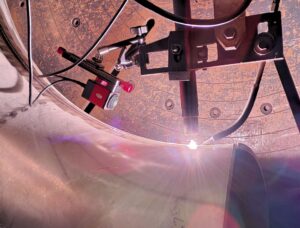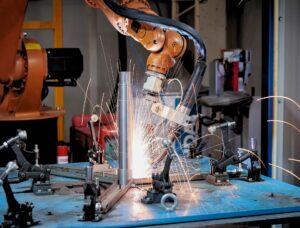Weld quality is non-negotiable—especially in industries where strength, durability, and precision are essential. For decades, welders have relied on traditional inspection methods like visual checks, ultrasonic testing, and radiographic inspection to catch flaws. But with the rise of weld monitoring cameras and real-time welding inspection systems, the way we evaluate welds is rapidly evolving. So what’s more effective: sticking with traditional techniques or adopting modern welding camera solutions? In this article, discover the differences of using welding cameras vs traditional inspection and how welding technology is reshaping weld quality control. in arc welding, MIG welding, TIG welding, and beyond.
What Are Traditional Welding Inspection Methods?
Traditional methods rely on post-weld analysis and physical inspection of the finished weld. These include:
- Visual Inspection – The most basic form, using the naked eye or magnifiers to detect cracks, weld slag inclusion, undercuts, or misalignment.
- Ultrasonic Testing (UT) – Uses high-frequency sound waves to detect internal flaws.
- Radiographic Testing (RT) – X-ray or gamma rays are used to inspect internal weld quality.
- Magnetic Particle & Dye Penetrant Testing – Detect surface cracks or porosity, commonly used in metal arc welding applications.
While these methods are proven and widely used, they often occur after the weld is complete—making it harder to fix issues without rework.
What Are Welding Cameras and Monitoring Systems?
Weld monitoring cameras are real-time tools designed to track welding processes as they happen. These systems can be integrated into robotic welding, plasma arc welding, and manual welding setups. A camera for welding captures arc welding images, allowing operators to monitor temperature distribution, weld bead formation, and alignment during the process.
Key features include:
- High-resolution imaging of the arc and molten pool
- Real-time monitoring and recording
- Integration with welding equipment for process control
- Live feedback for welding quality assurance
Advanced weld monitoring systems are now used in MIG and MAG welding process, TIG welding (Tungsten Inert Gas), laser welding, and automated applications where precision is crucial.
Pros and Cons: Welding Cameras vs. Traditional Inspection
| Feature | Traditional Inspection | Welding Cameras |
| Timing | Post-weld | Real-time |
| Accuracy | Depends on technique | High, with detailed visual data |
| Human Error | High potential | Reduced through automation |
| Cost | Lower up front | Higher initial investment, lower long-term cost |
| Rework Prevention | Limited | Yes – errors caught during the weld |
| Process Optimization | Minimal | Real-time data supports improvement |
| Documentation | Manual, sometimes incomplete | Automatic data logging and image recording |
Why Welding Cameras Improve Weld Quality
- Detect Weld Defects Instantly
Unlike traditional inspections that find problems after they’ve occurred, welding cameras spot weld defects like porosity or poor penetration as they form. That means fewer failed joints and less scrap material. - Enable Better Control
With a weld monitoring system, operators can monitor arc stability, wire feed rate, and heat input—all in real time. This is particularly useful in MIG welding, TIG welding, and plasma arc welding, where fine-tuning parameters is critical. - Enhance Safety and Productivity
In high-risk environments or remote operations, monitoring the weld remotely via a welding camera enhances safety and reduces operator fatigue. It’s especially useful for robotic welding and laser welding setups. - Improve Documentation and Traceability
With visual records of every weld pass, you can trace quality issues back to specific moments. This level of welding visual inspection is nearly impossible to achieve manually.
When to Use Traditional Methods
Despite their limitations, traditional methods still have their place, especially for:
- Post-weld audits required by regulations
- Inspecting inaccessible areas or final product checks
- Small shops where budget constraints prevent full camera system integration
They’re particularly effective when combined with modern systems—serving as a final validation step after real-time monitoring.
The Best of Both Worlds
For maximum effectiveness, many companies now combine both strategies:
- Use weld monitoring cameras to catch problems early and optimize the process.
- Follow up with traditional welding inspection to ensure full compliance and verify results.
This hybrid approach boosts confidence in the final weld while reducing costly rework.
Conclusion: Which Is More Effective?
If you’re aiming for high precision, fewer defects, and a more efficient workflow, welding cameras clearly offer superior performance compared to traditional inspection alone. While older methods still serve a purpose, the future of weld inspection lies in real-time, camera-assisted monitoring.
Mecaweld provides advanced welding camera systems and inspection tools tailored for modern manufacturing. Whether you’re working with MIG, TIG, plasma arc, or robotic welding, our technology delivers the clarity and control you need to improve welding quality.
Contact us today to learn how our weld monitoring solutions can upgrade your process and reduce weld problems for good.



